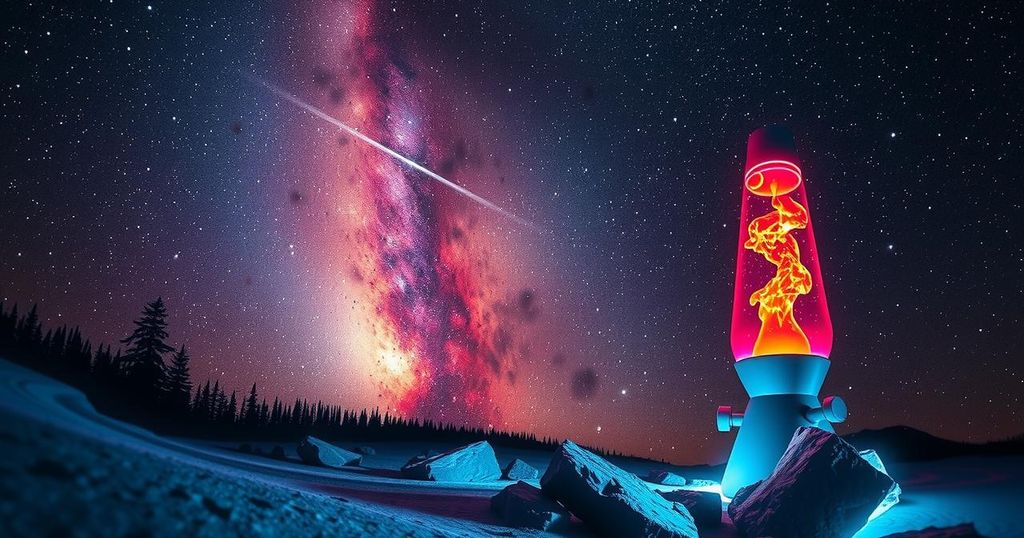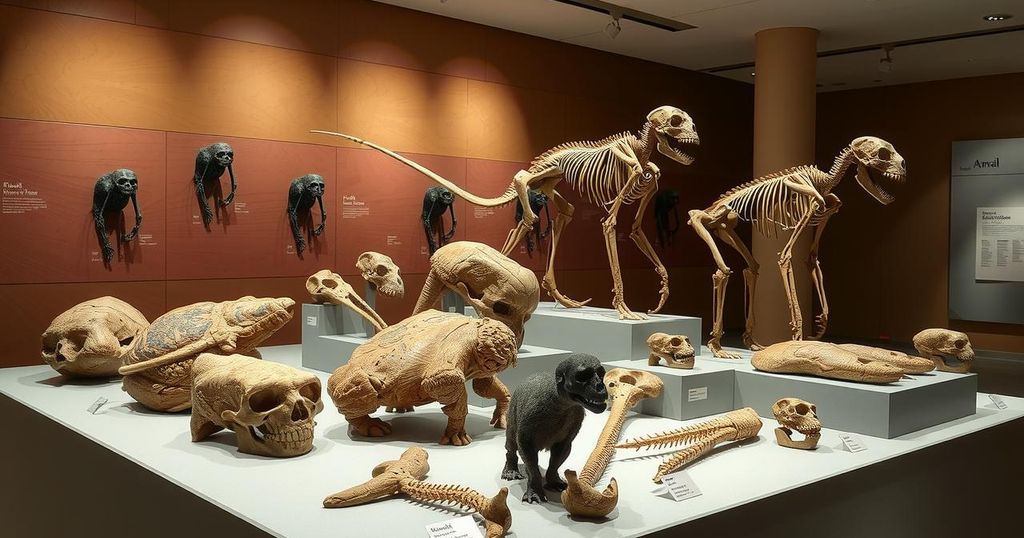Exploring Cosmic Dance: R Doradus and the Lava Lamp Analogy
Astronomers have observed gas convection on the red giant star R Doradus, revealing similarities to a lava lamp. Using ALMA, they tracked the star over four weeks, noting immense gas cells rising and falling at 20 km/s. This study enhances our understanding of stellar evolution and the formation of cosmic elements.
In a remarkable cosmic ballet, astronomers have witnessed for the first time the mesmerizing gas movements on the surface of the distant red giant star R Doradus, likening its behavior to that of a lava lamp. Utilizing the powerful Atacama Large Millimeter/submillimeter Array (ALMA) in Chile, scientists scrutinized this stellar giant for four weeks during the summer of 2023. The star, located about 180 light-years from Earth, is nearing its demise, having expanded to 350 times the width of the sun, and showcases colossal convective cells that rise and fall with grace and speed.
These colossal gas bubbles—spanning a staggering 75 times the sun’s width—surge and sink at an astonishing 20 kilometers per second, approximately 60 times faster than the speed of sound. This unexpected velocity astounds researchers, who draw parallels to the captivating oscillations in a lava lamp or the gentle ebbs of boiling water. Wouter Vlemmings, an astronomer at Chalmers University of Technology in Sweden, emphasizes, “It’s kind of the principle of a lava lamp or boiling water.” Such observations offer a tantalizing glimpse into the turbulent life of giant stars, showcasing dynamic processes previously visible only in our sun.
R Doradus is not just another star; it serves as a cosmic exemplar for understanding stellar evolution and the origins of cosmic elements that, in turn, forge stars, planets, and eventually life itself. Vlemmings reflects on the significance of this star, stating, “The majority of the stardust that goes on to become new objects comes from stars like the one we looked at. But the process of how this works is still not fully understood.” As researchers unveil these celestial mysteries, they inch closer to unveiling the physics that weave the fabric of the universe, hoping to understand the splendor beneath the surface.
The study of stars, particularly their lifecycle and behaviors, presents a crucial understanding of our universe. Stars like R Doradus, which are red giants nearing their end, undergo dramatic transformations, expanding significantly while maintaining similar mass to the sun. Convection plays a vital role in transporting heat and energy within stars, and observing these processes enhances our comprehension of how elements are formed in the cosmos. R Doradus, located 180 light-years away, exemplifies these processes with unprecedented detail.
The groundbreaking observations of gas movements on R Doradus reveal the vital role of convection in stellar dynamics, akin to a lava lamp’s mesmerizing dance. As astronomers track the rapid rise and fall of enormous gas bubbles, they not only deepen our understanding of stellar evolution but also illuminate the origins of the very elements that compose our universe and ultimately, ourselves. With these revelations, researchers strive to unravel the intricate physics behind these celestial phenomena, paving the way for future discoveries that could further unveil the cosmos’s mysteries.
Original Source: www.sciencenews.org




Post Comment